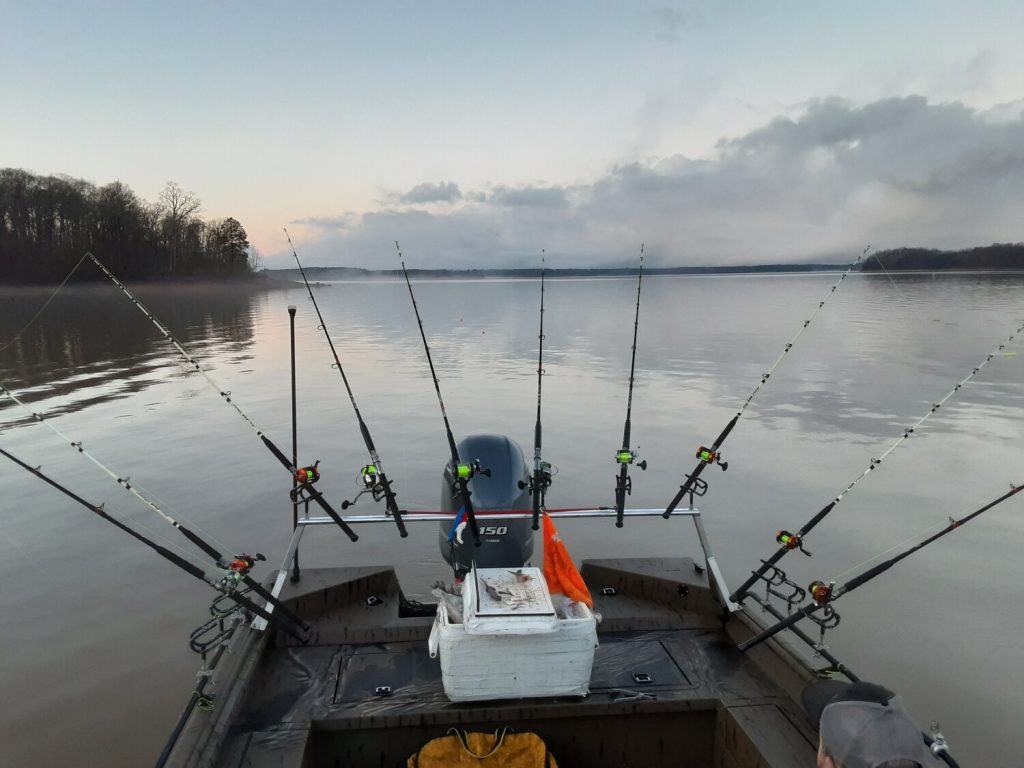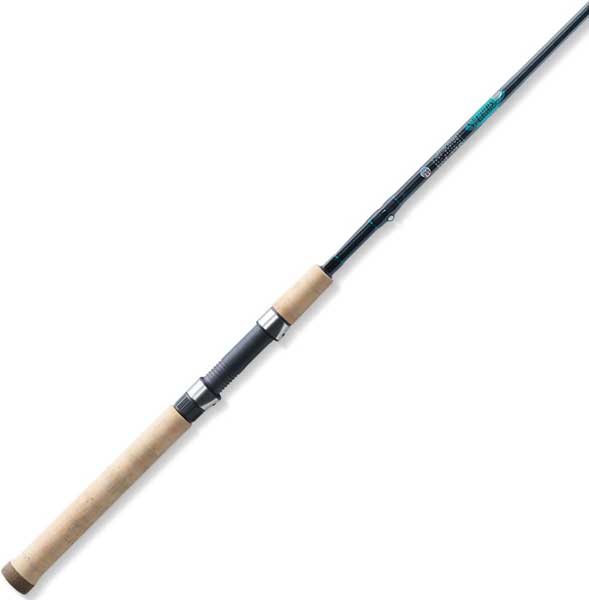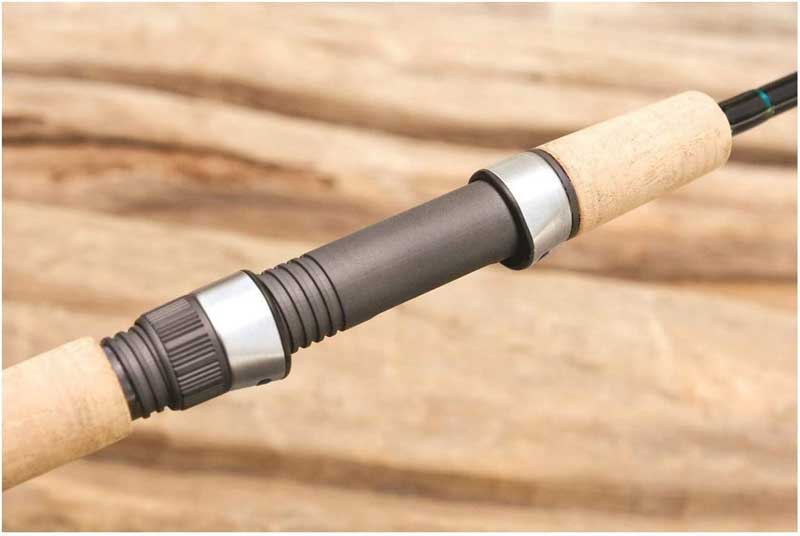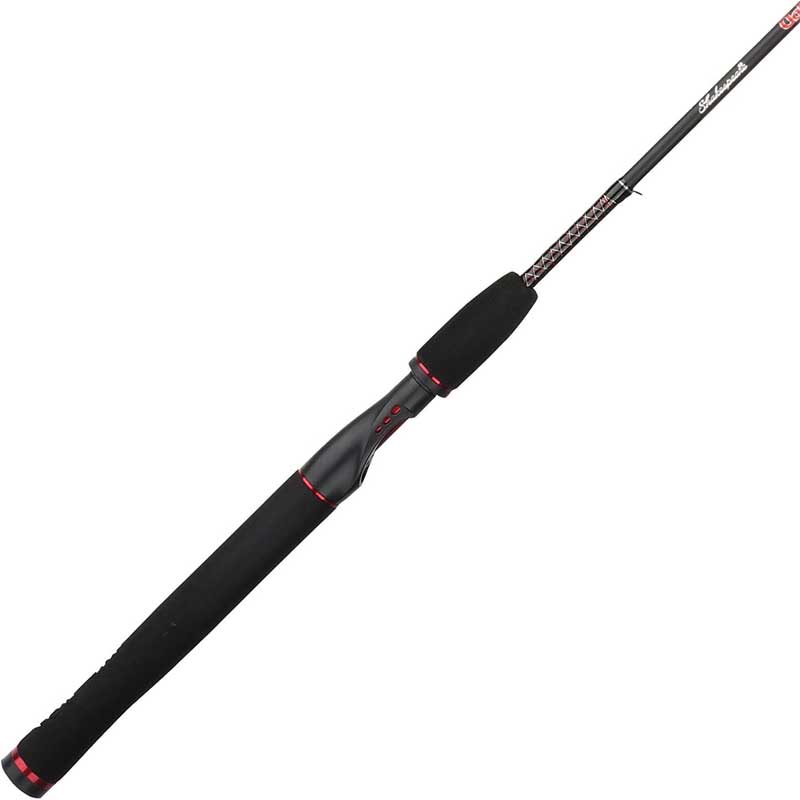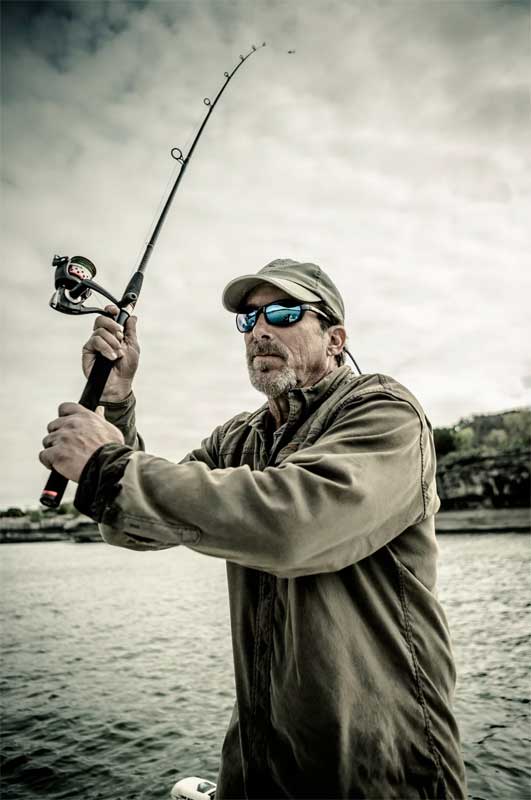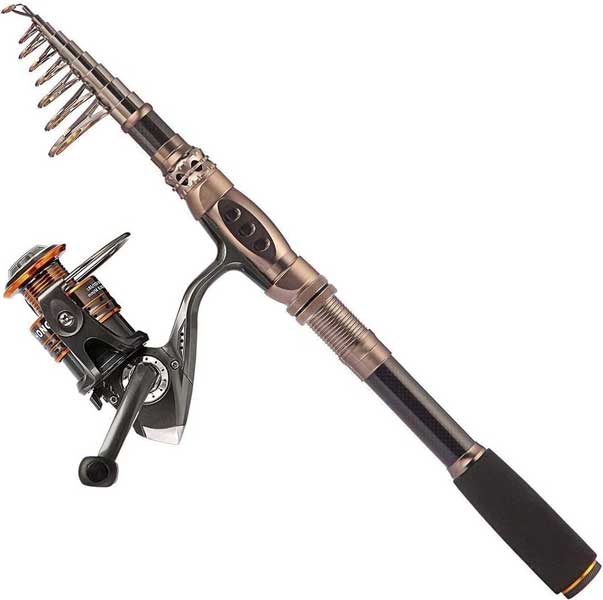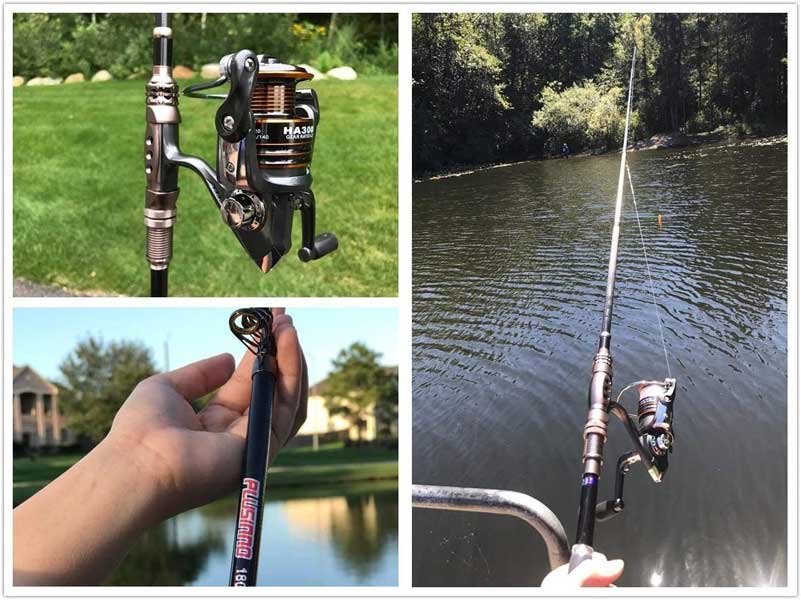How to Choose a Fishing Rod for the Lake
A good fishing setup starts with the fishing rod. Now the challenge is to find the correct fishing rod setup for the type of fishing that you wish to undertake. You wouldn’t take shorts to the snow and similarly you wouldn’t take a surf rod on a boat in the lake! Today we will focus on the best fishing rod setups for fishing on the lake.
General fishing rod criteria includes the rod length, rod material, action and power. Let’s cover each of these in more detail.
Rod Length
Most rods for lake fishing would be in the range of 6-8 feet. The longer the rod, the further you can generally cast. Conversely, longer rods they become more difficult to manage, especially on a boat. For completeness, shorter rods are generally more powerful and a consideration if you are targeting large fish species.
I would recommend a 2 piece rod of length 6’6″ to 7′. This will cater for most fishing scenarios on the lake and beyond.
1 piece vs 2 piece vs extendable rods
1 piece rods are the strongest and provide the best “feel”. However these are also often the most difficult to pack and transport. Therefore the 2 piece rod setup is the most popular. If space is extremely tight, extendable rods or telescopic rods are an options. These however are more flimsy. That said, I have caught many fish on extendable rods on vacations where it was too difficult to pack my full fishing setup.
Spinning or Casting Reel Support
Fishing rods are either made for spinning reels or casting reels (also known as baitcaster reels). While we do love our casting reels, we are focusing on spinning rods in this article. Casting reels are our preference for all day large lure casting. Whereas spinning rods and are our preference for shore and boat bait fishing. Often we are on the lake we are taking it easy and prefer the spinning rods.
Fishing Rod Materials
The most common material used to manufacture fishing rods are fiberglass, graphite, carbon fibre and composite (which means both graphite and composite). Rod material is a key decision on your fishing rods performance.
Fibreglass Fishing Rods
These are your traditional fishing rods. These have been around for ages and still often solid performance for the everyday angler at a great price point.
These are strong and durable rods and perfect for a beginner or casual angler.
The downside of fibreglass rods is their sensitivity or feedback. In real fishing terms, this means lighter bites or small strikes on lures are harder to detect. They are also heavier than graphite rods.
Graphite Fishing Rods
Graphite rods are lighter than fibreglass rods which makes them a popular choice for anglers looking for that next level equipment.
Graphite rods are usually rated based on their modulus, or stiffness. The higher the modulus, the stiffer the material used in the manufacturing of the rod. Higher modulus rods are able to use less material to achieve the same level of stiffness than a lower modulus rod.
The lighter weight of these rods make them a pleasure to cast and use for extended periods of time. Think of casting bass lures all day.
Apart from weight, graphite rods are more sensitive to bites and strikes.
The negatives of a graphite rod is that they can be more brittle and sensitive to breaking. They are also more expensive than a fibreglass rod.
Carbon Fibre Fishing Rods
Carbon fibre fishing rods are another light weight fishing rod option. Carbon Fibre rods are less brittle than graphite and thus great for handling larger fish. These rods are considered tougher than graphite rods.
The compromise is that carbon Fibre rods are not as sensitive as graphite rods.
Carbon fibre rods are generally a cheaper alternative to graphite rods.
Composite Fishing Rods
Wanting the best of both worlds? Perhaps a composite rod is for you. Composite fishing rods offer excellent performance, sensitive and strength with an acceptable weight.
As such, composite fishing rods are generally the most expensive.
Fishing Rod Handles
Cork and EVA foam are the two most common materials. Cork was once the goto material and then EVA foam along. Now things have gone full circle and cork is considered the most preferred material. Cork is more sensitive to transferring vibrations from the rod, more comfortable in most conditions and easier to clean.
Fishing Rod Action – slow, medium and fast
An often overlooked design aspect of a fishing rod is the rod’s action. Fishing Rod “action” defines how much and where your rod will bend and then revert back to its original shape and position. This is important for the type of fishing that you intend to do and the fish species that you are targetting.
Fast or Heavy Action Fishing Poles
A fast action fishing pole will bend near the the tip of the rod. These rods are sensitive to small bites or strikes and should indicate to you of such actions through the vibrations of the rod and the visible cues. These rods also flex back very fast, making them ideal for fast hook setting. Fast action rods have strong backbones in the rod and these ideal of fishing larder fish species, including Bass.
Heavy action rods can be more difficult to cast distance and have a distinctive “stiff” feel. Great for quickly setting hooks and lures.
Medium Action Fishing Rods
A medium action rod is immediately different when compared with the fast action rods as they tend to flex in the upper half of the rod. The advantage of a medium action rod is that allows the fish more time to bite, can cast further distances and still provide good sensitivity. Medium action fishing poles are a versatile and good all-round fishing rod option.
Medium action rods are generally the best option for most laking fishing and also the most versatile.
Slow or Light Action Fishing Poles
Slow action fishing poles are the most flexible of the fishing rods, bending across the majority of the backbone. Slow action rods are best suited for small fish like trout. It is great fun seeing your fishing pole with a massive bend!
Slow action rods can be a little more difficult to set hooks as the time to strike is slower. However once set, it is easier to maintain pressure when fighting the fishing.
Fishing Rod Power
Fishing pole power is often confused with action. Let’s try and clear out any confusion. A fishing rod’s power is its capability to withstand pressure at its action rating (slow, medium or fast). For example, if you have a heavy action rod, the power refers to how much pressure is needed to bend the rod to its heavy action rating.
The actual power rating of a rod relates to the rod’s line and lure rating. Basically a light rated rod will have a low line and lure rating and is best for small fish such as trout. A heavy power rating will be best for heaving line and heave lures. It is important to stick within the recommended line and lure ratinges of the rod to avoid unnecessarily snapping rods and for best rod performance.
Power rating often start at ultra-light, light, medium light, medium, medium heavy and heavy.
** Some manufactures do not list both power and action on their rods.
Fishing Pole Guides
Summary For Choosing the Best Fishing Pole for the Lake
A good all-round fishing rod would be a 2 piece, 6’6″ to 7″ length rod, with a medium action and medium power. This would provide you with a very versatile fishing rod setup for most lake situations.
You can go lighter or heavy on the power or action based on your actual fishing requirements.
Now let’s look at some of our best recommendations for lake fishing.
Best Fishing Poles for the Lake
Now that we have covered off on the key criteria for selecting the perfect fishing pole for your angling adventures on the lake, let’s look at some of our recommendations.
Best Overall Fishing Rod – St. Croix Premier Spinning Rod
- St Croix Premier 6’6″ length
- 2 piece rod
- Carbon Fibre material construction.
- Cork handle
- Power: Medium Light
- Action: Fast
- Line weight: 4-10lb
- Lure Weight: 1/8-1/2 oz
Why we rate this Fishing Rod?
This is an awesome carbon fibre fishing rod. The power and action are well matched and delight to use. Casting comes easy and accuracy is great. This rod is great for quick setting of hooks for fish that like to play with bait. The power of the rod ensures a good battle with fish while the quality provides a great sense of confidence. Match this rod to a quality reel and you will have an awesome fishing setup.
The only real negative of this rod is that it is not made for fishing large species such as catfish. This is not a concern for us, as we usually don’t target such fish. The lighter the rod and tackle, generally the more fish that you will catch.
best Value Fishing Rod – Ugly Stik GX2
- Ugly Stik GX2 6’6” length
- 2 piece rod
- Medium action
- Composite material for strength and sensitivity
- EVA foam handle
- Line weight: 6-15lb
- Lure Weight: 1/8-5/8 oz
Why we rate this Fishing Rod?
This fishing rod presents excellent value for money. It is durable enough to last the test of time. Most importantly. it is a solid fishing pole for the type of fish you can expect to catch out on the lake. The medium action provides good casting distance. The rod has adequate power to manage the majority of fish that you can expect to catch. I find this as a perfect rod for shore based fishing. It is ideal to bait up, cast out and then wait for that awesome fish to come along.
If you want to be picky, this rod is a little heavy and not as sensitive as other rods. However it all comes down to the price of the rod.
The Ugly Stik GX2 is also available in various combos with well matched fishing reels. This also makes an excellent gift.
Cheap Travel Rod – Plusinno Telescopic Carbon Fibre Fishing Rod
- Plusinno 5’9” length
- Telescopic Rod
- Medium action (estimate)
- Composite material Carbon Fibre and fibreglass
- EVA foam handle
- Line weight: 6-12lb (estimate)
- Lure Weight: 1/8-5/8 oz (estimate
Why we rate this Fishing Rod?
This is a cheap telescopic rod for when you are unsure if you are going to go fishing. You know the situation, you see an amazing stretch of water and wish that you had a rod! I keep one of these in the trunk of my car and will often pack one when travelling to a lake destination.
Let’s be open here. This is a cheap rod. The first thing to do is put some decent line on the reel. The rod will provide acceptable flex with the medium action construction. I have broken one of these rods. I see this as just part of taking a cheap rod fishing. However I have also caught some amazing fish on these rods.
The rod is actually quite good for casting. It does feel a little flimsy and clearly can tell it is not at the same level as the St. Croix.
Conclusion for Lake Fishing Rods
We hope to see you out fishing on the lake. Lake fishing is one of my favourite past times. Even if you don’t catch any fish, i find the experience to be very relaxing.
This guide should give you the right information to buy the perfect fishing rod. If it gets too hard as there are so many fishing rods and reels out there, just go with one of our selections and you will be pleasantly surprised.
Put some decent braid line on the reel. I would generally recommend 15-20lb as good general purpose option. 6-8 lb is best for smaller fish and heavier than 20 when chasing monsters. However 15-20lb is a good compromise in most situations.!
Enjoy your fishing!

